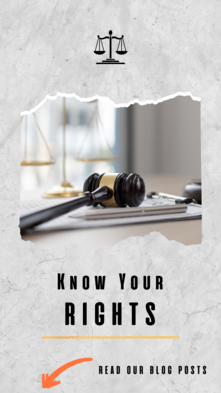Trademark Rectification and Cancellation Process
If you have a registered trademark in India, you may wonder what are the circumstances under which you can modify or remove it from the register of trademarks. In this blog post, we will explain the process of trademark rectification and cancellation, as well as the grounds and reasons for doing so.
What is trademark rectification?
Trademark rectification is the correction of an error or omission made in the trademark application as recorded in the trademarks register. For example, if there is a mistake in the spelling, address, class, specification, or proprietorship of the trademark, you can apply for rectification to amend it. Rectification can also be done to update the details of the trademark owner, such as change of name, address, or legal status.
How to apply for trademark rectification?
To apply for trademark rectification, you need to file a form TM-16 along with the prescribed fee and supporting documents to the Registrar of Trademarks or the High Court having jurisdiction. You also need to serve a copy of the application to the registered proprietor and any registered user of the trademark. The Registrar or High Court will then examine your application and issue a notice to both parties. If there is no opposition or objection, rectification will be allowed and recorded in the register. If there is any opposition or objection, a hearing will be held and a decision will be made accordingly.
What is trademark cancellation?
Trademark cancellation is the removal of a registered trademark from the register of trademarks. This can be done by either the registered proprietor or any aggrieved person who is affected adversely by the trademark. Cancellation can also be done by the Registrar of Trademarks on his own motion if he finds that the trademark is no longer valid or eligible for registration.
What are the grounds for trademark cancellation?
The grounds for trademark cancellation are specified in sections 47, 50, and 57 of the Trademarks Act, 1999. They are:
- Non-use: If it is proved that the trademark was registered without any bona fide intention of use by the owner or that it has not been used for a continuous period of five years from the date of registration and three months prior to filing the application for cancellation.
- Deception or confusion: If it is proved that the trademark is used in such a way that causes deception or confusion to the public or is contrary to any law or morality.
- Misrepresentation or non-disclosure: If it is proved that the owner has misrepresented or failed to disclose any material fact relating to the trademark in the application for registration, which if properly disclosed, would not justify such registration.
- Change in circumstances: If it is proved that due to a change in circumstances after registration, such as a change in trade practice, public perception, market conditions or legal provisions, the trademark is no longer distinctive, descriptive, generic or functional.
- Violation of conditions: If it is proved that there is a violation or failure to observe any condition or limitation imposed on the registration of the trademark.
How to apply for trademark cancellation?
To apply for trademark cancellation, you need to file a prescribed form along with the prescribed fee and supporting documents to the Registrar of Trademarks or High Court where the mark is registered. You also need to serve a copy of the application to the registered proprietor and any registered user of the trademark. The Registrar or HC will then examine your application and issue a notice to both parties. If there is no opposition or objection, the cancellation will be allowed and recorded in the register. If there is any opposition or objection, a hearing will be held and a decision will be made accordingly.
Conclusion
Trademark rectification and cancellation are important processes that help maintain the accuracy and validity of the register of trademarks. They also help protect the rights and interests of both trademark owners and other stakeholders. If you have any queries or concerns regarding your trademark registration, rectification or cancellation, you can consult a professional trademark attorney who can guide you through the process and represent you before the authorities.

